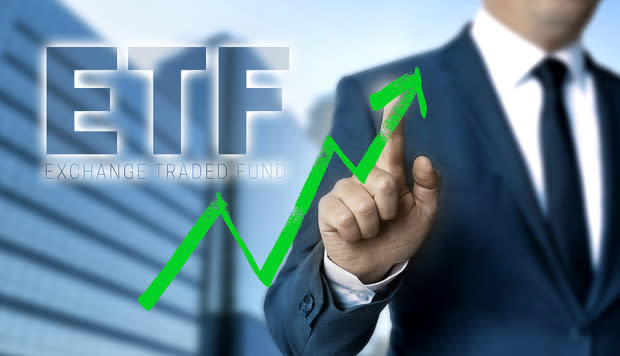5 Most Popular Actively Managed ETFs

Actively managed ETFs have gained immense popularity this year in response to the extreme volatility in the stock market. Active funds, which make up for a tiny fraction, i.e. less than 6% of the $7 trillion ETF industry, have pulled in more than $40 billion of capital in the first four months of the year — the second-highest level for this period on record.
Equity-focused active ETFs gathered $32.88 billion in the first four months, while fixed-income products saw inflows of $11.52 billion, according to data provider ETFGI. Active ETFs have seen 37 months of consecutive net inflows until April. The growing adoption of actively managed ETFs came as major active mutual fund providers entered the ETF fray by converting or cloning existing mutual fund strategies or adding new strategies.
Active ETFs: Pros and Cons
Actively managed ETFs do not seek to simply replicate the performance of a specific index. Instead, they are managed by a team of investment professionals who actively make decisions on what assets to buy or sell within the fund, with the goal of outperforming a benchmark index, especially in illiquid or inefficient markets or even if the odds are against it.
The manager uses various skills and attributes (like top-down approach, bottom-up approach, value investing, growth investing or absolute returns strategy) and could shift their allocations and positions according to the market environment. This helps to diversify assets in a portfolio or focus on specific investment themes or strategies.
Further, actively managed ETFs are a hybrid between traditional ETFs and actively managed mutual funds. Like traditional ETFs, they are traded on an exchange and offer the same transparency and tax efficiency benefits. However, like actively managed mutual funds, they have a management team making decisions about the fund's holdings (read: Here's Why Active ETFs Are Gaining Popularity: YTD Winners).
Though these funds attempt to beat the market, they might underperform their passive counterparts as most fund managers fail to match the return of the indexes with that of the funds. Additionally, active funds are arguably expensive as these involve research expenses associated with managers’ due diligence. These may not be popular or liquid too, which further inflates costs in the form of wide bid/ask spreads beyond the expense ratio. These funds also require daily portfolio disclosures, which could hamper the competitive portfolio composition.
Despite all drawbacks, active ETFs could generate superior risk-adjusted returns after expenses if chosen carefully. Here, we have highlighted the five most popular actively managed ETFs that could lead to outperformance even after adjusting for expenses when these are compared to their well-known benchmark or index-tracking counterparts.
ETFs in Focus
JPMorgan Equity Premium Income ETF (JEPI)
JPMorgan Equity Premium Income ETF seeks to provide current income while maintaining a combination of selling options and investing in U.S. large-cap stocks, seeking to deliver a monthly income stream from associated option premiums and stock dividends.
JPMorgan Equity Premium Income ETF has AUM of $26.1 billion and charges 35 bps in annual fees. The product trades in an average daily volume of 4.4 million shares.
JPMorgan Ultra-Short Income ETF (JPST)
JPMorgan Ultra-Short Income ETF invests primarily in a diversified portfolio of short-term, investment grade fixed- and floating-rate corporate and structured debt while actively managing credit and duration exposure. It holds 608 bonds in its basket with an average duration of 0.76 years.
JPMorgan Ultra-Short Income ETF has AUM of $24.6 billion in its asset base while trading in a good volume of around 4 million shares a day. It charges 18 bps in annual fees (read: Buffett Now Prefers Cash to Stocks: ETFs to Replicate).
Dimensional U.S. Core Equity 2 ETF (DFAC)
Dimensional U.S. Core Equity 2 ETF seeks to achieve long-term capital appreciation while considering federal income tax implications of investment decisions. It offers broadly diversified, total market exposure and aims to add value with an integrated emphasis on securities with
higher expected return.
Dimensional U.S. Core Equity 2 ETF has amassed $8.9 billion in its asset base and charges 17 bps in annual fees. It trades in an average daily volume of 1.7 million shares.
PIMCO Enhanced Short Maturity Active ETF (MINT)
PIMCO Enhanced Short Maturity Active ETF is actively managed that seeks greater income and total return potential than traditional cash investments in exchange for a modest increase in risk. It primarily invests in short-duration investment-grade debt securities. PIMCO Enhanced Short Maturity Active ETF holds 666 securities in its basket, with an average maturity of 0.26 years and an effective duration of 0.22 years.
PIMCO Enhanced Short Maturity Active ETF has accumulated $8.7 billion in its asset base while trading in a solid volume of around 833,000 shares a day. It charges 35 bps in annual fees.
ARK Innovation ETF (ARKK)
ARK Innovation ETF is an actively managed fund investing in companies that benefit from the development of new products or services, technological improvements and advancements in scientific research. In total, the fund holds 28 securities in its basket, with some concentration on the top three firms (read: 5 ETFs Leading the Tech Outperformance in May).
ARK Innovation ETF has gathered $7.7 billion in its asset base and charges 75 bps in fees per year from investors. It trades in a volume of 16 million shares per day on average.
Want the latest recommendations from Zacks Investment Research? Today, you can download 7 Best Stocks for the Next 30 Days. Click to get this free report
ARK Innovation ETF (ARKK): ETF Research Reports
PIMCO Enhanced Short Maturity Active ETF (MINT): ETF Research Reports
JPMorgan Ultra-Short Income ETF (JPST): ETF Research Reports
JPMorgan Equity Premium Income ETF (JEPI): ETF Research Reports
Dimensional U.S. Core Equity 2 ETF (DFAC): ETF Research Reports

 Yahoo Lifestyle
Yahoo Lifestyle 